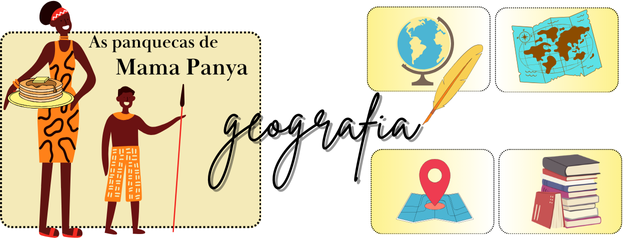Mama Panya's pancakes: interdisciplinarity in geography teaching
DOI:
https://doi.org/10.58951/dataset.2024.011Abstract
This article explores interdisciplinarity in Geography education, using the literary work "Mama Panya's Pancakes" as a pedagogical tool. Since ancient times, storytelling has been essential for recording events and attributing meanings. In modern times, children's literature faces challenges in reaching its audience due to the monotonous image often presented by school curricula. This study is based on a bibliographic review and analysis of the BNCC (National Common Curricular Base) to propose didactic activities that integrate literary reading into Geography education for the fourth year of Elementary School. The selected book, set in Kenya, offers rich representation and various geographical concepts such as place, landscape, region, and territory, which are analyzed in the classroom in a playful and interactive manner. The book also addresses Black representation, promoting acceptance and appreciation of Afro-descendant identity among students. The proposed methodology includes the construction of scenarios and dynamics that facilitate the understanding of geographical and cultural concepts through active student involvement. Our analysis reveals that "Mama Panya's Pancakes" not only enriches Geography education but also stimulates students' pleasure in reading, cognitive development, and critical thinking. We conclude that the interdisciplinarity promoted by the use of children's literature in Geography education broadens students' cultural and geographical knowledge, fosters collective work, and contributes to the formation of a critical and diverse identity. This study highlights the importance of integrating literature into the school curriculum for more comprehensive and meaningful learning.
References
Araújo, F. R. de O.; Morais, J. N. B. de. (2021). Ler para a criança crescer. In: VI SENACEM IV ENACEI: Base nacional, currículo e práticas inovadoras: caminhos para a escola de qualidade, 2021, Mossoró. p. 280-387.
Botelho, M. J., & Rudman, M. K. (2009). Critical Multicultural Analysis of Children's Literature: Mirrors, Windows, and Doors. 1a ed. New York, Routledge. 376 p. DOI: https://doi.org/10.4324/9780203885208
Brasil. (2018). Ministério da Educação. Base Nacional Comum Curricular. Brasília, DF.
Chamberlin, M.; Chamberlin, R. As panquecas de Mama Panya. Primeira edição. Barefoot Books, Ltd: SM Educação, 2005. 45 p.
Rocha Filho, J. B. da; Ozelame, J. K. C.; Ozelame, D. M. (2016). Interdisciplinaridade: O ensino de ciências por meio da literatura infantil. Espaço pedagógico, 23(1), p. 171-184, jan.jun/2016. DOI: https://doi.org/10.5335/rep.v23i1.6363
Martins, R. E. M. W. (2015). O uso da literatura infantil no ensinos iniciais. Revista Geo UERJ, 27, p. 64-79. https://dx.doi.org/10.12957/geouerj.2015.11909 DOI: https://doi.org/10.12957/geouerj.2015.11909
Naidoo, J. C. (2014). The importance of diversity in library programs and material collections for children. ALSC - Association for Library Service to Children. Acesso em: 3 de Agosto de 2024. Disponível em: <https://www.ala.org/alsc/publications-resources/white-papers/importance-diversity>.
Senado Federal. (2016). Ideia Legistalita. Obrigatoriedade do estudo da história e cultura indígena, africana e afro-brasileira nas licenciaturas na área das ciências humanas. Senado Federal, e-cidadania. Brasília. Disponível em < https://www12.senado.leg.br/ecidadania/visualizacaoideia?id=51182> Acesso em: 16 de agosto de 2024.
Thomas, E. E. (2016). Stories Still Matter: Rethinking the Role of Diverse Children's Literature Today. Language Arts, 94(2), 112-119. https://doi.org/10.58680/la201628803 DOI: https://doi.org/10.58680/la201628803

Downloads
Published
How to Cite
Issue
Section
License
Copyright (c) 2024 Ana Cristina da Silva Marcolino, Claudia Dayse Gomes de Paiva, Fabrícia Raquel de Oliveira Araújo

This work is licensed under a Creative Commons Attribution 4.0 International License.
This journal publishes its Open Access articles under a Creative Commons license (CC BY 4.0).
You are free to:
Share — copy and redistribute the material in any medium or format for any purpose, even commercially.
Adapt — remix, transform, and build upon the material for any purpose, even commercially.
The licensor cannot revoke these freedoms as long as you follow the license terms.
Under the following terms:
Attribution — You must give appropriate credit, provide a link to the license, and indicate if changes were made. You may do so in any reasonable manner, but not in any way that suggests the licensor endorses you or your use.
No additional restrictions — You may not apply legal terms or technological measures that legally restrict others from doing anything the license permits.
Notices:
You do not have to comply with the license for elements of the material in the public domain or where your use is permitted by an applicable exception or limitation.
No warranties are given. The license may not give you all of the permissions necessary for your intended use. For example, other rights such as publicity, privacy, or moral rights may limit how you use the material.




